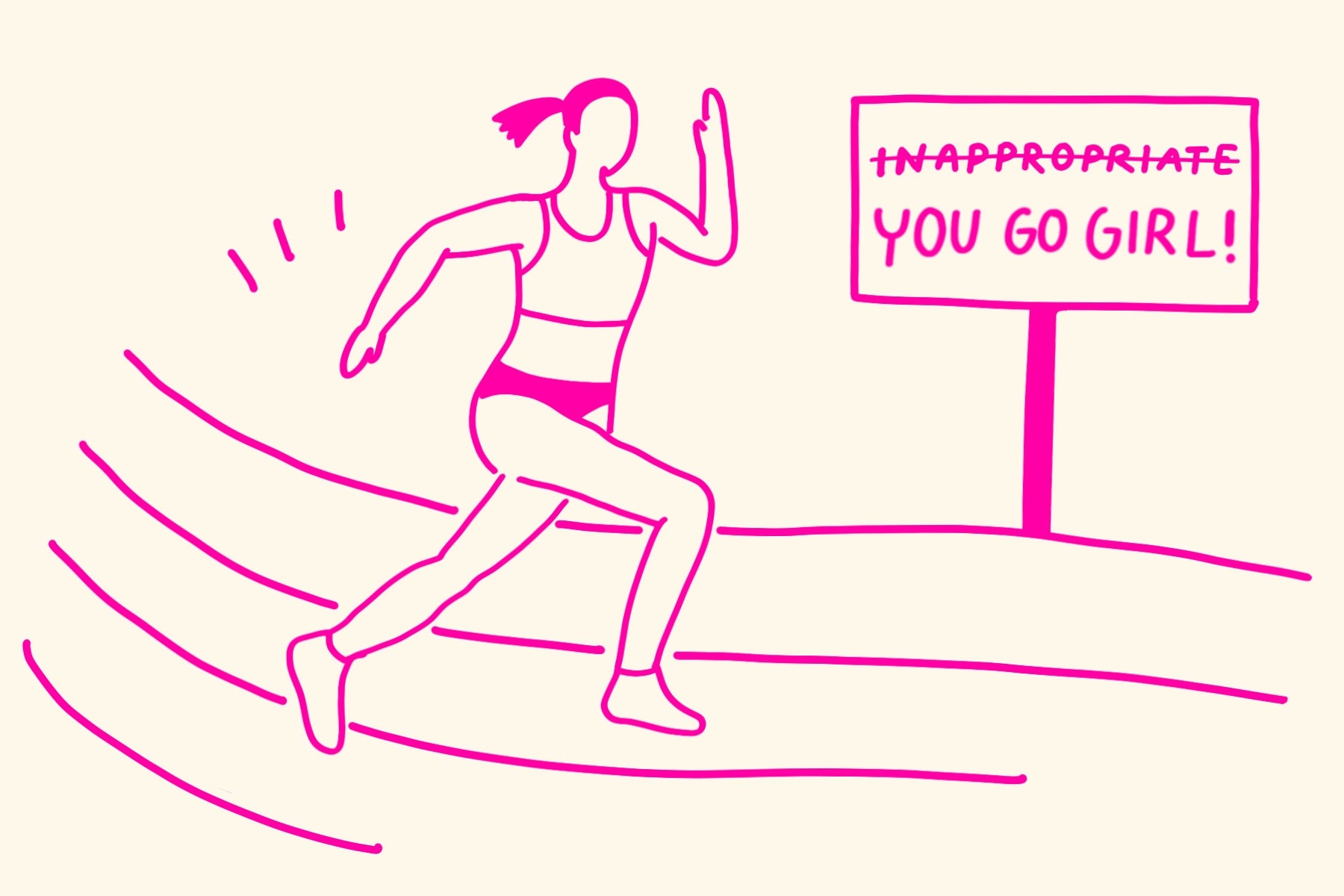Your cart is currently empty

— oliviabreen (@BreenOlivia) July 18, 2021
-----
Earlier this week, 24-year-old double Paralympic world champion, Olivia Breen, tweeted out that she felt self-conscious when a volunteer at the English Championships commented on the length of her briefs and called it inappropriate. Breen pointed out that it hurt more because it came from a woman, and that she plans to make an official complaint with the English Athletics.
Policing the athletic wear of women has been a gender-based discriminatory practice as old as time. A few days ago, the Norwegian beach volleyball women’s team was also threatened with a fine of approx €50 per player, since its members defied the European Championship’s rules. What was the rule they broke? They decided to wear shorts instead of bikini bottoms; anything covering more than 10cm of their butt is disallowed. The players felt like they were being sexualised and had the support of the Norwegian Handball Federation that is willing to foot the fine.
You might also remember that viral post from 2019 by a petite American woman, Diane Newberry, who shared that she had been asked by her gym to wear a sports bra beneath her tank top, even though she didn’t feel the need for one (‘cause we wear sports bras for extra support, right?). The manager of the gym walked up to her and said that she needed to wear them because there had been complaints about her working out without one.
A US-based survey in 2019 found that 65% of the women they spoke to avoided going to the gym for fear of being judged about their fitness levels or for their workout clothes, and are concerned about being stereotyped. In comparison, only 35% of the men surveyed reported similar worries.
Back in 2011, when Saina Nehwal was an upcoming star, the World Badminton Federation introduced a new dress that required all ‘female’ players to wear skirts or dress (no shorts) to “ensure attractive presentation of badminton”. This was despite some players coming forward to say that skirts hamper their movement.
In 2018, the Indian Olympic Association decided that women athletes will no longer have to wear saree with a blazer for the opening ceremony, but trousers instead.
The same year, the French Tennis Federation banned Serena Williams’ black catsuit on the court even though fans and media loved it! The Federation’s President, Bernard Giudicelli, a white man, described as having gone ‘too far’, while emphasising on the need ‘to respect the game and the place’.
One of the main reasons for dress code in sports is to distinguish the competing players from the rest of the crowd. When the teammates wear the same colour, it also helps foster a team spirit and sense of shared identity. Other aspects like protection may also be taken into consideration when creating the policy. However, why can’t players be allowed to wear clothes that they are most comfortable in, made of fabrics that they find most suitable?
At That Sassy Thing, we think that this is one of the ways that sports and physical activity is made inaccessible to cis-women (and we are not even talking about people of other marginalised genders yet!). It is a denial of an opportunity for health as well as pleasure. Yes, pleasure! The runner’s high and the post-game feeling of euphoria have long been celebrated in athletics. Then why is it that cis-women are shamed in such moments for something as trivial as the clothes they wore?
-----
About the author:

Tejaswi is a media professional and researcher focused on pleasure & joy in areas of public health. Their attention is captured by post-colonial human relationships at a time of the Internet of Things.
Tejaswi is autistic and identifies as queer in more ways than one.













